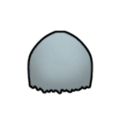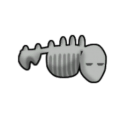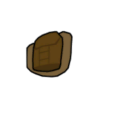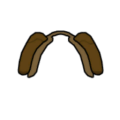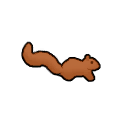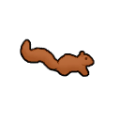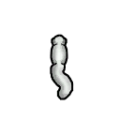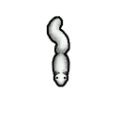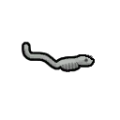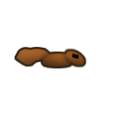Difference between revisions of "Animals"
m |
m (Provided proper links + cleaned the code) |
||
| Line 1: | Line 1: | ||
| − | In RimWorld, animals roam the world free, minding their own business, eating [[plants]] and pacing back and forth. They don't provide anything else than a threat of becoming mad and attacking any [[people]] on sight. | + | In '''RimWorld''', animals roam the world free, minding their own business, eating [[plants]] and pacing back and forth. They don't provide anything else than a threat of becoming mad and attacking any [[characters|people]] on sight. |
| − | Growing [[food]] outdoors can sometimes attract animals inside your base perimeter. | + | Growing [[Resources#Raw_food|food]] outdoors can sometimes attract animals inside your base perimeter. |
| − | As of | + | |
| + | As of (Build 212), these are the animals implemented in '''RimWorld''': | ||
[[Category:Main]] | [[Category:Main]] | ||
Revision as of 12:37, 23 October 2013
In RimWorld, animals roam the world free, minding their own business, eating plants and pacing back and forth. They don't provide anything else than a threat of becoming mad and attacking any people on sight.
Growing food outdoors can sometimes attract animals inside your base perimeter.
As of (Build 212), these are the animals implemented in RimWorld:
| The origin of the boomrat has varied over time. In the initial release of the Revival Briefing, which is now considered non-canon, they were described as originating as a biological weapon that survived and bred after wars on the worlds they now inhabit. The current version of the Revival Briefing states that they, along with the boomalope, were originally engineered as a primitive renewable fuel source. While this holds true for boomalopes, boomrats cannot and could never be milked for chemfuel in-game. Meanwhile, their current in-game description also disagrees with the current briefing and supports the now-obsolete original version, stating that their explosive tendencies are either a result of deliberate weaponization or intended as a defense mechanism. | Muffalo A large herding herbivore descended from buffalo and adapted for both cold and warm environments. While enraged muffalo are deadly, tamed muffalo are quite docile and can be used as pack animals. Base Stats
Pawn Stats
Production
Melee Combat
Technical
Muffalo are slow-moving, grass-grazing quadrupeds analogous to buffalo. TamingMuffalo can be found in . They can either be tamed by a handler or self-tame in a random event. Muffalo can be bought and sold in other faction bases and from bulk goods traders. Muffalo purchased from traders will be already tamed. SummaryMuffalo are pen animals. Once tamed, pen animals cannot and do not need to be trained any further. But if left outside of a pen or caravan hitching spot, pen animals will eventually roam outside your colony. Making a caravan is not required to tie animals to a caravan hitching spot. Muffalo can be sheared for Muffalo are also pack animals, and will carry up to kg of weight in a caravan. They cannot be ridden. AnalysisMuffalo arrive in large packs; a herd of muffalo can be a lifesaver in colder biomes. Two or three muffalo usually provide enough leather (or wool if you are willing to tame them) to make a parka as well as a generous amount of meat. But, if enraged, a herd can be a large threat to colonists. As tamed animals, muffalo are a wool-producing pack animal, which can be found in colder biomes. In a tundra or ice sheet, the only pack animal available is the muffalo. They can survive cold temperatures that would kill most other pack animals. Their wool and leather is also great for cold insulation.
They are almost identical to bison, the main differences being comfortable temperature, leather type, and wool type. Muffalo are also slower than both bison and baseline humans. This makes muffalo safer to hunt, though as muffalo are only 0.1 c/s slower than humans, you should still take care while hunting. TrainingThis animal can be trained as follows:
*As of version 1.1.2610, all animals can be tamed. The percentage of likelihood of success depends on factors such as the Animals Wildness Percentage, Pawn Handling Skill, and others. More information can be found on the animals page. HealthTriviaThe original texture was created by Tynan Sylvester himself in 2013, dating it to A2 or earlier and making it one of the oldest textures still in use.[1] GalleryVersion history
|
Squirrel One of the many hardy rodent species that follows humankind everywhere it spreads. Squirrels are distinguished by their bushy tails, which they use as umbrellas in bad weather. Base Stats
Pawn Stats
Production
Melee Combat
Technical
Squirrels are one of the smallest and generally mostly harmless animals on rimworlds. Storytellers often make this the target of your first maddened animal encounter, sending it to attack your colonists. Squirrels can be found in . AnalysisWith very low health and a low melee damage, one might think this critter to be harmless. But due to its fast speed and very fast attack rate, your colonists may suffer many bleeding wounds very quickly, adding up to a potentially lethal threat. Their small size makes them hard to shoot, and a large group of squirrels turned manhunter can be especially dangerous. Otherwise, squirrels offer a tiny amount of food when hunted, equal to that of the rat. They have no particular use as tamed animals, not valuable for meat. Even as "bait" animals, rats and hares are better at the task. Hares are faster and just as difficult to tame, while rats are omnivores and easier to tame. Both can be found in all biomes that squirrels reside in. TrainingThis animal can be trained as follows:
*As of version 1.1.2610, all animals can be tamed. The percentage of likelihood of success depends on factors such as the Animals Wildness Percentage, Pawn Handling Skill, and others. More information can be found on the animals page. HealthGallery
Version history
|


